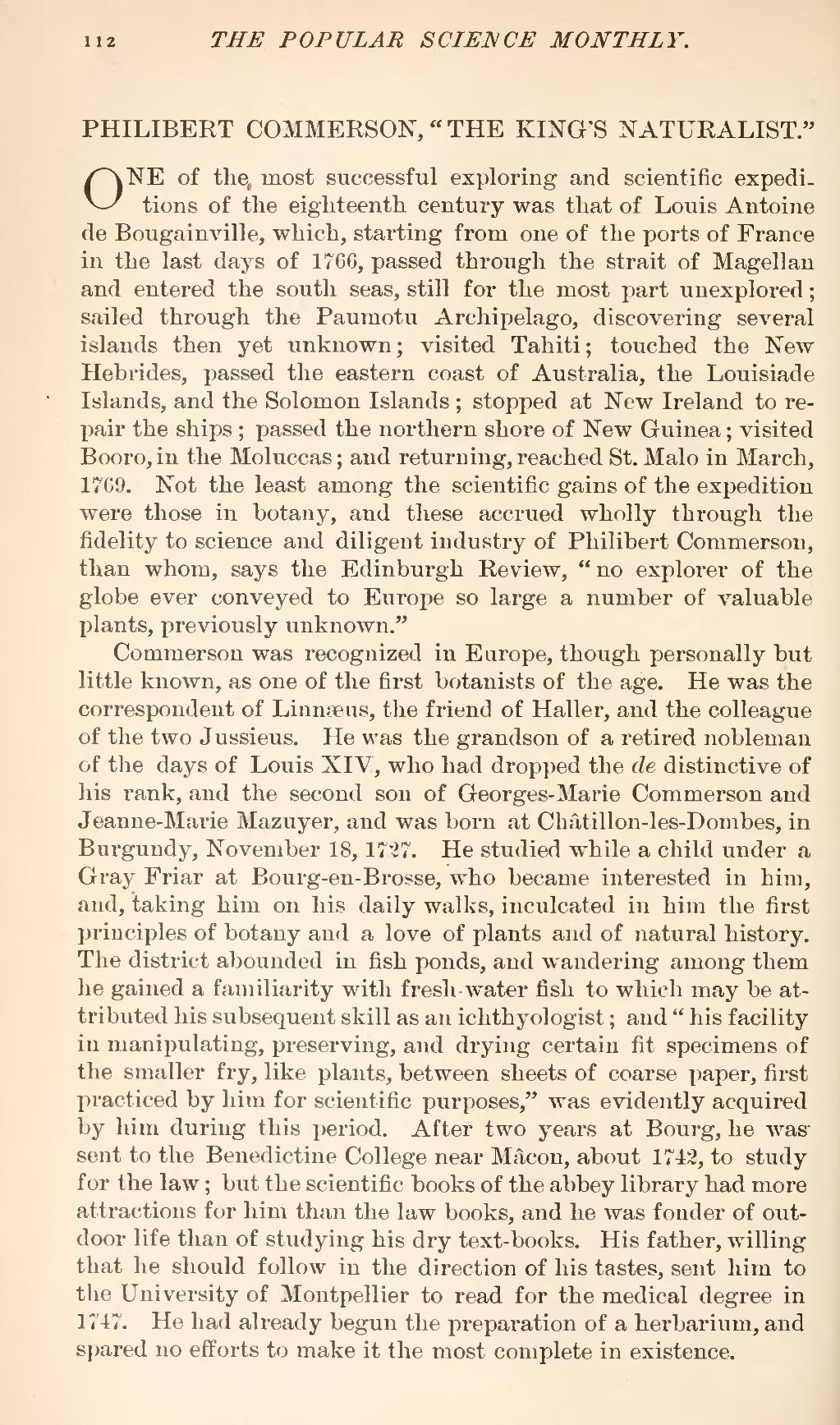| PHILIBERT COMMERSON, "THE KING'S NATURALIST." |
ONE of the, most successful exploring and scientific expeditions of the eighteenth century was that of Louis Antoine de Bougainville, which, starting from one of the ports of France in the last days of 1766, passed through the strait of Magellan and entered the south seas, still for the most part unexplored; sailed through the Paumotu Archipelago, discovering several islands then yet unknown; visited Tahiti; touched the New Hebrides, passed the eastern coast of Australia, the Louisiade Islands, and the Solomon Islands; stopped at New Ireland to repair the ships; passed the northern shore of New Guinea; visited Booro, in the Moluccas; and returning, reached St. Malo in March, 1769. Not the least among the scientific gains of the expedition were those in botany, and these accrued wholly through the fidelity to science and diligent industry of Philibert Commerson, than whom, says the Edinburgh Review, "no explorer of the globe ever conveyed to Europe so large a number of valuable plants, previously unknown."
Commerson was recognized in Europe, though personally but little known, as one of the first botanists of the age. He was the correspondent of Linnæus, the friend of Haller, and the colleague of the two Jussieus. He was the grandson of a retired nobleman of the days of Louis XIV, who had dropped the de distinctive of his rank, and the second son of Georges-Marie Commerson and Jeanne-Marie Mazuyer, and was born at Châtillon-les-Dombes, in Burgundy, November 18, 1727. He studied while a child under a Gray Friar at Bourg-en-Brosse, who became interested in him, and, taking him on his daily walks, inculcated in him the first principles of botany and a love of plants and of natural history. The district abounded in fish ponds, and wandering among them he gained a familiarity with fresh-water fish to which may be attributed his subsequent skill as an ichthyologist; and "his facility in manipulating, preserving, and drying certain fit specimens of the smaller fry, like plants, between sheets of coarse paper, first practiced by him for scientific purposes," was evidently acquired by him during this period. After two years at Bourg, he was sent to the Benedictine College near Macon, about 1742, to study for the law; but the scientific books of the abbey library had more attractions for him than the law books, and he was fonder of outdoor life than of studying his dry text-books. His father, willing that he should follow in the direction of his tastes, sent him to the University of Montpellier to read for the medical degree in 1747. He had already begun the preparation of a herbarium, and spared no efforts to make it the most complete in existence.
